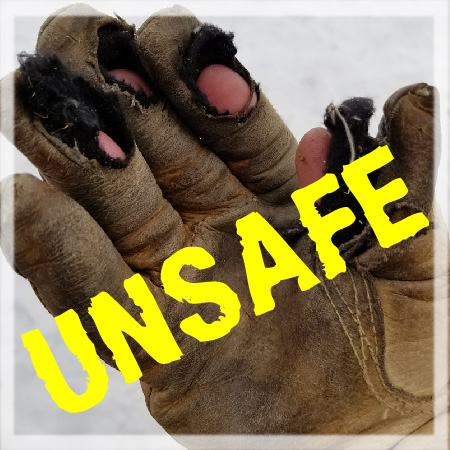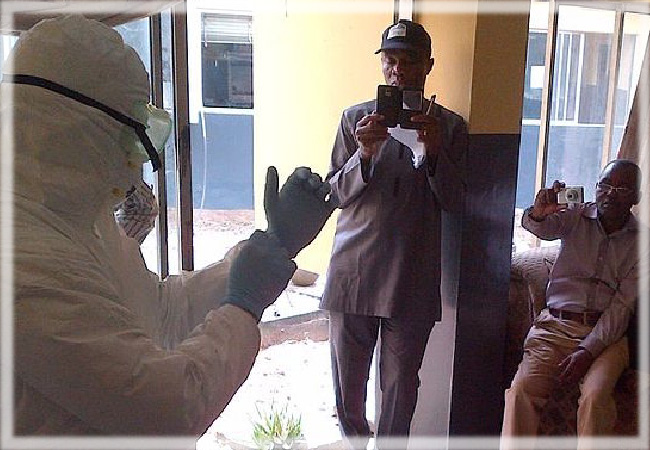Currency
June 23, 2018
2

1. In this qualitative study, active failures in infectious agent transmission precaution practices were observed frequently.
2. Common failures include: failure to enter room with some or all of the recommended personal protective equipment (PPE), mistakes during donning and doffing PPE, touching ones face or other clean areas with contaminated gloves or gowns.
Study Rundown: Personal protective equipment (PPE) has been proved to decrease transmission of infectious agents in the hospital setting however it is not always worn or used properly putting health care workers and patients at risk. This qualitative study aimed to identify and characterize failures in transmission-based precautions, including PPE use, by health care professionals that could result in self-contamination or transmission during routine, everyday hospital care.
Overall, active failures (unsafe acts committed at the human-system interface) in infectious agent transmission precaution practices were observed frequently. Of the 325 room observations, there were 283 active failures witnessed: 102 violations (intentional deviations from recommended practices, procedures or standard), 144 process or procedural mistakes (failures of intention) and 37 slips (failures of execution). Violations involved entering room without some of all of the recommended PPE, mistakes were mainly observed during doffing of PPE and slips included touching one’s face or clean areas with contaminated gloves or gowns. Strengths of this study include direct observation and quantification of misuse of PPE. Limitations of this study include its qualitative nature where health care personnel were informed they were being observed, introducing observer-induced bias and may underestimate the results.

In-Depth [qualitative study]: This qualitative study involved direct observation and was conducted on 16 acute medical or surgical care units, one emergency department and 4 ICU units at 2 university-based academic medical centres from March 2016 to November 2016. Trained observers monitored and recorded extensive field notes while health care personnel provided care for patients in rooms with precautions (contact, droplet, airborne).Health care personnel were informed they were being monitored. The outcome of interest was number and type of failures observed while using transmission-based precautions. Occurrences were identified and analyzed using directed content analysis and they were further categorized using the Reason human factors model of human error into violations, mistakes, slips.
In total there were 325 room observations of which 283 active failures were observed. There were 102 violations (deviations from recommended practice) and commonly included not entering the patient room without appropriate PPE equipment on. This included entering the room to speak to families or the patient, or going into the room to drop something off and leaving. There were 144 process or procedural mistakes (errors of intent) that were often observed when personnel were donning and doffing PPE. There were 37 slips (failures of execution) where personnel inadvertently touch their face or other clean areas with contaminated gloves.
2. Common failures include: failure to enter room with some or all of the recommended personal protective equipment (PPE), mistakes during donning and doffing PPE, touching ones face or other clean areas with contaminated gloves or gowns.
Evidence Rating Level: 3 (Average)
Study Rundown: Personal protective equipment (PPE) has been proved to decrease transmission of infectious agents in the hospital setting however it is not always worn or used properly putting health care workers and patients at risk. This qualitative study aimed to identify and characterize failures in transmission-based precautions, including PPE use, by health care professionals that could result in self-contamination or transmission during routine, everyday hospital care.
Overall, active failures (unsafe acts committed at the human-system interface) in infectious agent transmission precaution practices were observed frequently. Of the 325 room observations, there were 283 active failures witnessed: 102 violations (intentional deviations from recommended practices, procedures or standard), 144 process or procedural mistakes (failures of intention) and 37 slips (failures of execution). Violations involved entering room without some of all of the recommended PPE, mistakes were mainly observed during doffing of PPE and slips included touching one’s face or clean areas with contaminated gloves or gowns. Strengths of this study include direct observation and quantification of misuse of PPE. Limitations of this study include its qualitative nature where health care personnel were informed they were being observed, introducing observer-induced bias and may underestimate the results.

In-Depth [qualitative study]: This qualitative study involved direct observation and was conducted on 16 acute medical or surgical care units, one emergency department and 4 ICU units at 2 university-based academic medical centres from March 2016 to November 2016. Trained observers monitored and recorded extensive field notes while health care personnel provided care for patients in rooms with precautions (contact, droplet, airborne).Health care personnel were informed they were being monitored. The outcome of interest was number and type of failures observed while using transmission-based precautions. Occurrences were identified and analyzed using directed content analysis and they were further categorized using the Reason human factors model of human error into violations, mistakes, slips.
In total there were 325 room observations of which 283 active failures were observed. There were 102 violations (deviations from recommended practice) and commonly included not entering the patient room without appropriate PPE equipment on. This included entering the room to speak to families or the patient, or going into the room to drop something off and leaving. There were 144 process or procedural mistakes (errors of intent) that were often observed when personnel were donning and doffing PPE. There were 37 slips (failures of execution) where personnel inadvertently touch their face or other clean areas with contaminated gloves.
SOURCE:
https://www.2minutemedicine.com/failures-in-using-personal-protective-equipment-are-commonly-observed/
2 Comment(s)
WalterKal
Jul 15, 2018 18:46
Great website, Thanks!
Thomasdog
Jul 15, 2018 18:46
Great website, Thanks!









